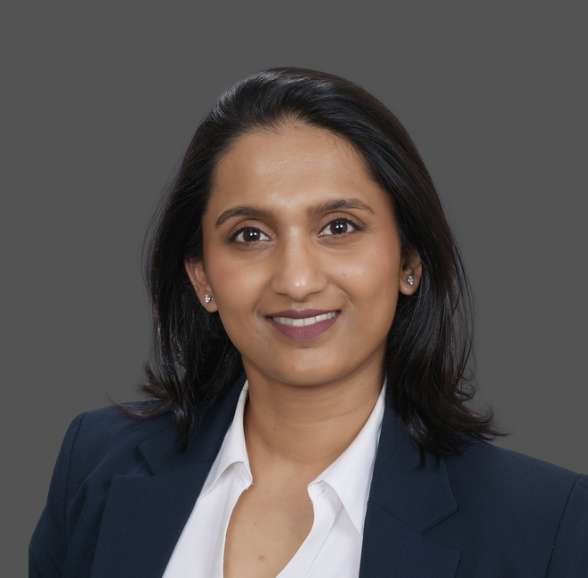The Zero Trust Hub
Trends, insights, and resources for today's cybersecurity leaders. Updated weekly.
A Zero Trust Gift Guide: What Security Teams Actually Want This Year

Chief Evangelist
If you’re shopping for the Zero Trust strategist in your life (or are one yourself), skip the socks and novelty mugs this year.
Want to make them really happy? Help them build a stronger Zero Trust architecture.
While Zero Trust is a strategy and not something you can purchase, strategies still need tools, practices, and support to become reality.
So, if you’re wondering what to get that special Zero Trust champion in your life (or you’re angling for a little year-end budget magic), here’s my holiday gift guide for building a Zero Trust program.
1. Complete visibility: you can’t protect what you can’t see
Visibility isn’t step one of Zero Trust because it’s step always. You have to see your network’s terrain to defend it.
This holiday season, help your security team ditch the network blind spots. For a complete Zero Trust architecture, you need real-time, accurate, and comprehensive visibility across every asset, every connection, and every workload.
2. Segmentation: the gift of control
Segmentation is what keeps bad actors from waltzing through your network like they own the place. It limits lateral movement, reduces the blast radius of an attack, and lets you enforce least-privilege access in a practical, scalable way.
No Zero Trust program is complete without segmentation, and it’s one of the most valuable gifts you can give your team.
3. Continuous monitoring: because attackers don’t go on holiday
Monitoring once a quarter won’t cut it anymore, and neither will assuming your audit report from June still reflects your current risk in December.
What your Zero Trust team needs is continuous monitoring, the kind that keeps watch while they sleep, detects anomalies, and helps them respond before an attacker gets comfortable.
Continuous monitoring connects the dots between “trust nothing” and “verify everything, all the time.” You stay ready, learn from every signal, and make your environment stronger with each attempt to break it.
It’s the path to antifragility — a system that doesn’t just hold up under pressure but improves because of it. And it’s a gift that pays off every single day.
4. Automation: time is a terrible thing to waste
If you’re building a Zero Trust wish list, automation needs to be near the top. It’s one of the most valuable gifts you can give your team, especially when it works hand-in-hand with continuous monitoring.
Monitoring and automation are like chocolate and peanut butter. They go together and improve on each other.
You need visibility into what’s happening, and you need the ability to act on it without delay. That’s how you go from watching to doing.
Automation helps you enforce policies, contain threats, and respond in real time — no waiting around for someone to log in and click a button. It reduces human error, eliminates slow manual steps, and makes your Zero Trust architecture easier to manage at scale.
Zero Trust only works when decisions happen fast and consistently. Automation makes that possible.
5. Executive sponsorship: your Zero Trust team can’t do it alone
No Zero Trust strategy succeeds without air cover from the top.
Executive sponsorship is what makes Zero Trust part of business strategy. It helps turn security plans into funded, resourced, organization-wide initiatives.
When executives model Zero Trust thinking, everyone else follows suit. Help your security team win with Zero Trust by supporting a board that champions Zero Trust.
6. A culture that embraces Zero Trust: an organization-wide security mindset
A true Zero Trust culture doesn’t happen by accident. It’s created, and it starts at the top.
When executives sponsor Zero Trust as a strategic priority, they create the right incentives. Those incentives drive the behaviors that make smart security decisions second nature across the organization.
That kind of culture breaks down silos. It brings together security, IT, networking, and compliance under a shared mission. And it helps turn Zero Trust from a project into a way of operating the business.
Executive sponsorship and culture are two sides of the same coin. You can’t build one without the other. And once they’re in place, you’ve got something even stronger than a policy or tool: an environment where Zero Trust can thrive.
Zero Trust stocking stuffers
It wouldn’t be Christmas without something you can actually wrap and drop into a stocking.
So if you’re looking for a physical gift, here are a few of my favorite books to give the Zero Trust strategist in your life.
Agentic AI + Zero Trust: A Guide for Business Leaders
I was honored to be able to write the forward to this book by Josh Woodruff and Michelle Savage. It’s the first that I know of that discusses the important topic of how Zero Trust can use and secure agentic AI.
The Project Zero Trust series
Authored by my good friend George Finney, this two-book series is a great way to start your Zero Trust journey. I was also honored to be able to write the forward to both books:
- Project Zero Trust: A Story About a Strategy for Aligning Security and the Business
- Rise of the Machines: A Project Zero Trust Story
Think Like an Attacker
Chase Cunningham (DrZeroTrust) and I go back over 20 years. His concise but profound book will give you new insights on how attackers think and how we can respond immediately.
The book is available for free from Illumio, or you can purchase it on Amazon.
As a special holiday gift, comment on the LinkedIn newsletter, and you'll be entered into a drawing to win a signed copy of Think Like an Attacker as a gift from Illumio and Dr Zero Trust himself.
Make it a Zero Trust new year
To build a secure, resilient organization in 2026 and beyond, you need to equip your team with the right tools, practices, and support to build Zero Trust.
Every gift on this list moves you closer to better security. Start now and be ready for whatever comes next.
Wishing you a breach-ready holiday season!
STATSHOT
Threats on the Move
In the wild, lateral movement isn’t just theory, it’s fact. In the past year, most cybersecurity leaders say they’ve spotted incidents involving lateral movement. More than half detected it in real time with the help of security tools. Nearly a third relied on human intuition or investigation. Still, a significant percentage missed the lateral movement until after the fact. Detection capabilities are improving, but the data also highlights the continued need for smarter, faster tools to catch lateral activity before it spreads.

November’s Top Cybersecurity Stories: Rising Risks, Tougher Rules, and Greater Resilience
November’s headlines revealed a breaking point for cyber: alert overload, shifting regulations, and rising attack speed. Our latest roundup breaks down the biggest risks, evolving rules, and resilience lessons CISOs can’t afford to ignore (and what all three might signal for 2026).
Australia’s New Boardroom Baseline: 5 New ASD and AICD Security Priorities to Know
ASD and AICD just issued five board-level cyber priorities that reset expectations for directors everywhere. From critical asset defense to supply chain oversight, the message is clear: resilience starts in the boardroom, and the stakes have never been higher. Here’s what matters most.
How a Zero Trust Strategy Keeps Federal Cybersecurity Strong During Uncertainty
When federal budgets tighten, staff shrink, or crises swirl — cyber adversaries don’t wait. Discover how a real-world Zero Trust approach helps agencies automate enforcement, lock down networks with micro-segmentation, and stay resilient even in the worst uncertainty.
Ready to learn more about breach containment?
The Hub Contributors

John Kindervag
Chief Evangelist

Raghu Nandakumara
Vice President, Industry Strategy

Gary Barlet
Public Sector CTO

Trevor Dearing
Director of Critical Infrastructure Solutions

Michael Adjei
Director, Systems Engineering

Christer Swartz
Director of Industry Solutions

Aishwarya Ramani
Sr. Solutions Marketing Manager

Scott Smith
Analyst Relations Director



